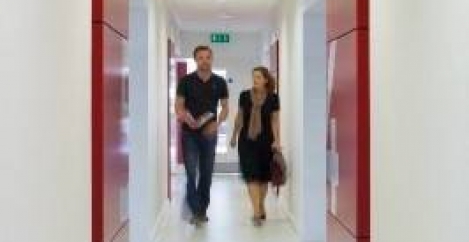February 27, 2019
Larger organisations will become main adopters of flexible workspace this year
 Corporations are this year set to become the driving force within the flexible workspace industry as the way they view their office portfolios continues to change, according to research by Instant Offices. The flexible workspace sector has ridden the crest of a wave for the past five years with global demand increasing by 50 percent and more market supply of flex space than ever before. Instant now estimates the global market to incorporate 32,000+ centres, which represents 521 m sq. ft. This is an increase of 15 percent year on year since 2013.
Corporations are this year set to become the driving force within the flexible workspace industry as the way they view their office portfolios continues to change, according to research by Instant Offices. The flexible workspace sector has ridden the crest of a wave for the past five years with global demand increasing by 50 percent and more market supply of flex space than ever before. Instant now estimates the global market to incorporate 32,000+ centres, which represents 521 m sq. ft. This is an increase of 15 percent year on year since 2013.
By the end of 2019, 40 percent of demand is expected to come from large and corporate companies, with the average tenant taking seven or more desks in flexible space.
Corporate organisations are looking for larger and more agile workspaces, which is symptomatic of a global move towards more flexible lease terms. The ‘Space as a Service’ model was responsible for some of the biggest flex deals of 2018 in New York and London, and included household brand names like Microsoft, Amex, IBM, GSK, Adidas, and Facebook. On the back of corporate tenant pressure, trends suggest that increasing numbers of landlords in the US and Asia will launch their own spaces or collaborate with providers. This has already been seen in the UK and Europe but is yet to take off in either of these markets.
Occupiers continue to reassess the way they use office space, and with both commercial real estate rates and the cost of living some of the highest on record, many companies are starting to look towards secondary cities to cut costs and increase affordability for employees. Forbes announced that the fastest growth markets in the US (gross metro product) in 2018 were Las Vegas, Orlando and Austin, all secondary markets, while in Europe, Manchester and Toulouse topped the UK and French markets thanks to increasing investment and a growing corporate focus.
In 2018, the sector showed significant market shifts with an increase in corporate clients looking for flex space. Demand from corporates increased by 21% in 2018 alone. Landlords are also taking a greater interest in the sector in the face of this increase in client demand.
All EMEA cities, including Manchester, Lille and Frankfurt, have seen supply grow by 15+% in response to accelerated demand. In the US states such as Kansas, Nebraska and Oklahoma all reported growth rates of over 20% across the last 12 months. Europe is forecast to see 255 million sq. ft. of flexible space in 2019 – a 12% increase with over 70% of this space being available in smaller secondary cities.
Despite growing demand, it is expected that this year, a short-term oversupply of all types of flexible office space, including co-working and hybrid space, will see 2019 rates contract in London. The same trend is likely to follow in New York and Hong Kong – the world’s largest flexible markets.
London rates are forecast to remain the highest in Europe at £644 in 2019, which alongside strong demand means suppliers continue to move into the market. It is expected that the flexible market will make up 7% of the London CRE market in 2019 on the back of continued investment and growth.
Image: Red Tree Business Suites, Glasgow via Instant Offices













